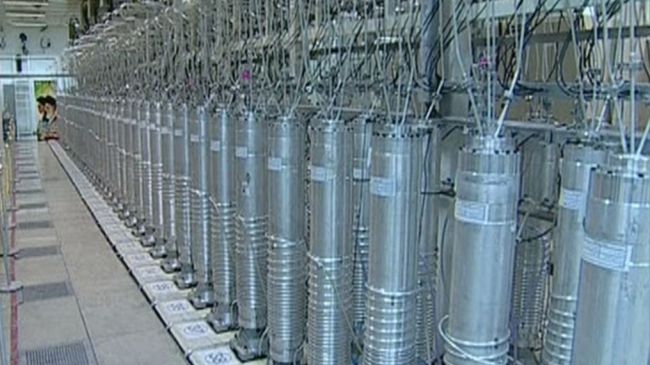
November 14-2014
Iran has halted enriching uranium in a new type of centrifuge, called the IR-5, that some critics said was a violation of the interim nuclear agreement with the Big Six.
The International Atomic Energy Agency (IAEA) issued a report last Friday that said Iran had been feeding uranium into a solitary IR-5 centrifuge to test it. Iran claims the IR-5 is a much faster centrifuge that can produce much more enriched uranium in a given period of time. The IAEA report did not characterize the IR-5 test as a violation of the interim accord.
But some critics in the United States did label it a violation.
The State Department announced Monday that Iran had ceased spinning its solitary IR-5 centrifuge. The State Department did not charge that the earlier use of the IR-5 was a violation of the interim accord. It also did not say it was not a violation.
It appeared to many that Iran had stopped work with the IR-5 on the assumption that it wasn’t worth the aggravation to argue about it when the deadline for reaching a deal on a long-term nuclear agreement was less than two weeks away.
The IR-5 is one of several new centrifuge models that Iran has been seeking to develop to replace its erratic, 1960s vintage IR-1 centrifuge that it now uses to enrich uranium.
Asked about the matter Monday, US State Department spokeswoman Jen Psaki told reporters Iran had agreed to cease injecting uranium into the IR-5 centrifuge.
“We raised that issue with Iran as soon as the IAEA reported it, and it was resolved immediately,” Psaki said. The timing indicated that US Secretary of State John Kerry had raised the issue with Iranian Foreign Minister Mohammad-Javad Zarif in their talks in Oman Sunday.
Psaki said, “The Iranians have confirmed that they will not continue that activity as cited in the IAEA report, so it’s been resolved.”
The Institute for Science and International Security (ISIS), a Washington-based think tank, issued an analysis saying “Iran may have violated [the interim accord] by starting to feed [uranium] into one of its advanced centrifuges, namely the IR-5.”
But the Washington-based Arms Control Association (ACA), a research and advocacy group, said it saw no violation because “no enriched uranium is being withdrawn from the machine.”
The interim agreement reached last November says very little about Iranian research and development work. The single sentence on R&D states: “Iran will continue its safeguarded R&D practices, including its current enrichment R&D practices, which are not designed for accumulation of the enriched uranium.”
ISIS apparently found the IR-5 spinning with uranium to be a violation because the IR-5 had not previously been spinning with uranium so it wasn’t a “continuation” of existing R&D practices, while the ACA found it not to be a violation because the result was not the “accumulation” of enriched uranium.
